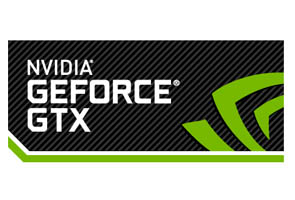- Home
- Laptops
- Laptops News
- NVIDIA launches GeForce GTX 680, dubs it the world's fastest GPU
NVIDIA launches GeForce GTX 680, dubs it the world's fastest GPU

The GeForce GTX 680 is the first to employ NVIDIA's groundbreaking Kepler architecture, a result of 1.8 million man-hours of work. The Kepler GPUs are composed of many different hardware blocks, each of which performs a specific task. The graphics processing chip continues to be the dominant high-level hardware block in Kepler. With its own dedicated resources for rasterization, shading, texturing, and compute, most of the GPU's core graphics functions are performed inside the graphics chip.
Faster
Equipped with 1536 CUDA cores, the GTX 680 also incorporates a GPU Boost technology that automatically maximizes clock speeds to achieve eye-popping levels of performance. GPU Boost is a combination hardware/software technology that is supported by GeForce GTX 680. GPU Boost works in the background, dynamically adjusting the GPU's graphics clock speed automatically based on GPU operating conditions. GPU Boost automatically adjusts clocks to achieve the maximum possible clock speed while remaining within a predefined power target.
Smoother
NVIDIA introduces the FXAA technology that utilizes the many CUDA cores of the GTX 680 to render smooth surfaces, accurate reflections and the most visually appealing depth of field possible in a game. They also introduce a hardware-software hybrid aliasing system called the TXAA that is designed to exploit the GTX 680's immense texturing capabilities.
Richer
Years ago, there was a company by the name of Ageia that revolutionized gaming with their Physx cards. It was a technology never heard of, a physical card that processed the information in the game with respect to the laws of physics, making the gaming experience a whole lot more realistic. But back then, computers could either house a GPU or a Physx card, putting the end-user in a raging conundrum. NVIDIA solved the problems by eventually acquiring the Physx technology and eventually infusing their graphic cards with the technology. The GTX 680 incorporates the highest levels of physics, to simulate water flow, shrapnel spread or even cloth movement with the most detail possible.
3D Vision
3D has become so mainstream in the last two years that expecting NVIDIA to stay out of the realm would be considered unrealistic. NVIDIA enhances their existing 3D Vision technology with the GTX 680 by giving it enough juice to run 3-monitors in 3D gaming mode, with a fourth running as an accessory display. It also supports output to monitors with 4K resolutions (3840 x 2160).
Last but not the least, the only way we can describe the new GTX 680 is with the phrase "Hulk-gone-silent." A common problem with most powerful GPUs has been that for all the graphical power they pumped through the circuitry, not only were they drawing in immense power from the power supply, but also made out cases sound like jet engines with their massive cooling fans.
NVIDIA addresses the power issue with the design of the Kepler architecture which effectively uses significantly less power than ATI's most powerful offering, the Radeon HD7970 or even their very own GTX 580.
NVIDIA puts the silencers on the GTX 680 by firstly embedding three heat pipes within the card's construction that draw the heat away from the main components. The heat is redirected towards heatsink with a new fin design that allows for better airflow. With the temperatures being lowered by the heat pipes and the heat sink, the fan runs at lower RPMs than we would normally expect. However, when running applications that will be taxing not only the CPU, but GPU as well, the fan gets equipped with sound dampeners to turn the decibels down.
Availability
The NVIDIA GeForce GTX 680 GPU is available now from the world's leading add-in card suppliers, including ASUS, EVGA, Gainward, KFA2 (Galaxy), Gigabyte, Inno3D, MSI, Palit, Point of View, PNY, Sparkle and Zotac. Expected pricing is $499.
Key Specs
Graphic Processing Clusters: 4
CUDA Cores: 1536
Base Clock: 1006 MHz
Boost Clock: 1056 Mhz
Memory Clock (Data Rate): 6008 MHz
L2 Cache: 512KB
Video Memory: 2GB GDDR5
Memory Interface: 256-bit
Architecture: 28nm
Recommended Power Supply: 550-watt
For the latest tech news and reviews, follow Gadgets 360 on X, Facebook, WhatsApp, Threads and Google News. For the latest videos on gadgets and tech, subscribe to our YouTube channel. If you want to know everything about top influencers, follow our in-house Who'sThat360 on Instagram and YouTube.
- Amazon Great Indian Festival 2024
- Big Billion Days 2024
- Apple Vision Pro
- Oneplus 12
- iPhone 14
- Apple iPhone 15
- OnePlus Nord CE 3 Lite 5G
- iPhone 13
- Xiaomi 14 Pro
- Oppo Find N3
- Tecno Spark Go (2023)
- Realme V30
- Best Phones Under 25000
- Samsung Galaxy S24 Series
- Cryptocurrency
- iQoo 12
- Samsung Galaxy S24 Ultra
- Giottus
- Samsung Galaxy Z Flip 5
- Apple 'Scary Fast'
- Housefull 5
- GoPro Hero 12 Black Review
- Invincible Season 2
- JioGlass
- HD Ready TV
- Laptop Under 50000
- Smartwatch Under 10000
- Latest Mobile Phones
- Compare Phones
- Huawei Mate X6
- Realme C75
- Huawei Mate 70 RS
- Huawei Mate 70 Pro+
- Huawei Mate 70 Pro
- Huawei Mate 70
- Oppo Reno 13 Pro
- Oppo Reno 13
- Asus Zenbook S 14
- MacBook Pro 16-inch (M4 Max, 2024)
- Huawei MatePad Pro 13.2
- Oppo Pad 3
- Huawei Watch Ultimate Design
- Nubia Watch GT
- Sony 65 Inches Ultra HD (4K) LED Smart TV (KD-65X74L)
- TCL 55 Inches Ultra HD (4K) LED Smart TV (55C61B)
- Sony PlayStation 5 Pro
- Sony PlayStation 5 Slim Digital Edition
- Blue Star 1.5 Ton 3 Star Inverter Split AC (IC318DNUHC)
- Blue Star 1.5 Ton 3 Star Inverter Split AC (IA318VKU)












